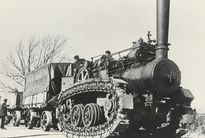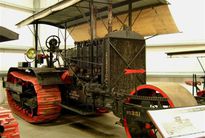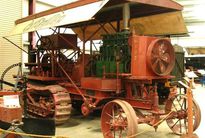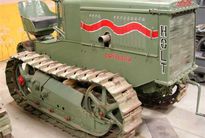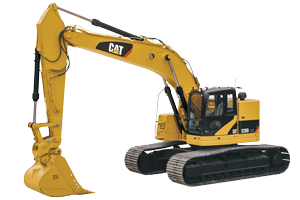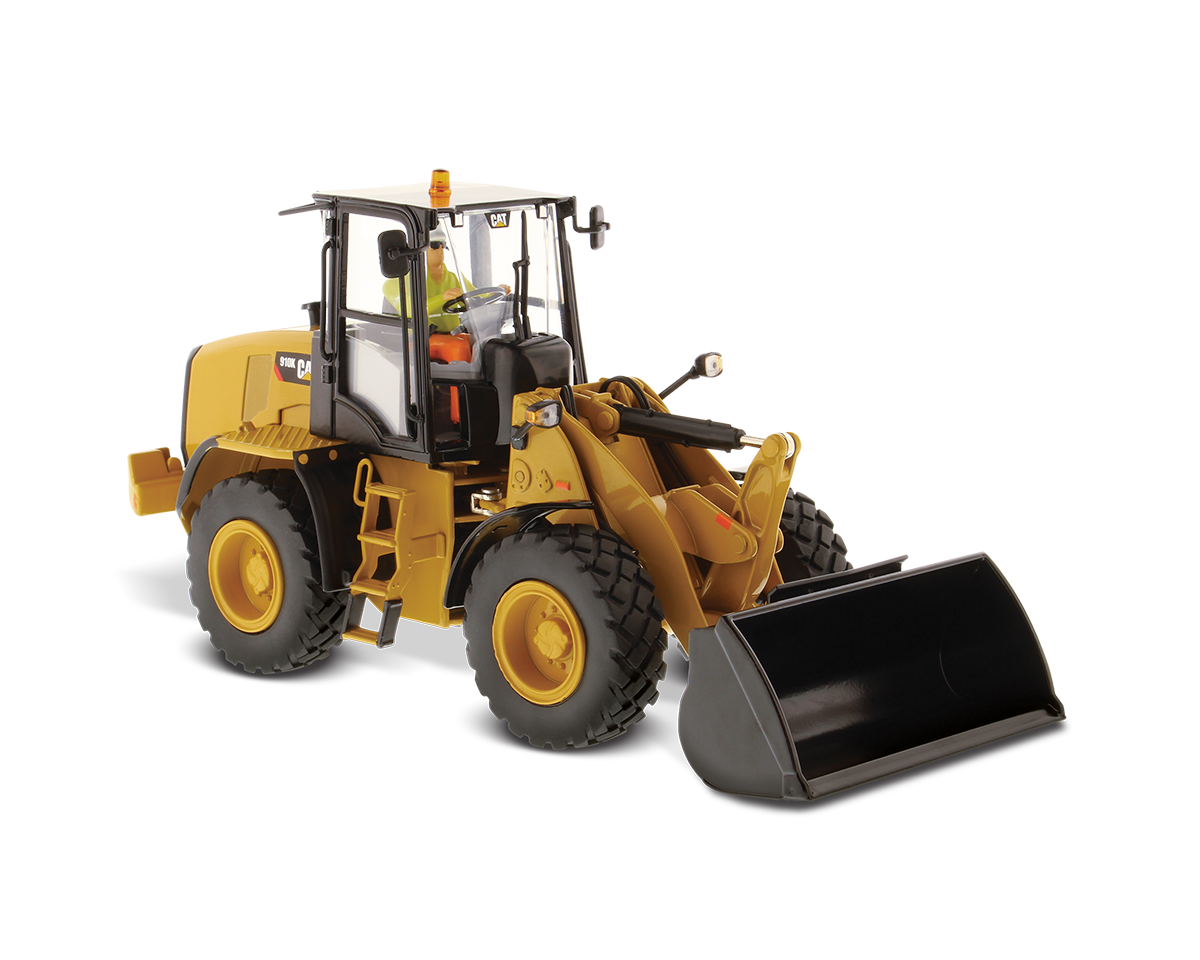CONTINUOUS TRACKS HAVE CHANGED THE WORLD
CONTINUOUS TRACKS HAVE CHANGED THE WORLD
CONTINUOUS TRACKS HAVE CHANGED THE WORLD
In 1925, the previously competing Holt Manufacturing Company, Stockton, California, USA, and the C. L. Best Tractor Co., San Leandro, California, USA, merged and the newly created company was named the Caterpillar Tractor Co.
Certain experimental archaeologists claim that logs held together with belts were used in the construction of the pyramids, helping the builders move stones. But the invention of the modern-day continuous track is attributed to English writer and inventor Richard Lovell Edgeworth (1744–1817), who first came up with the idea in 1770. However, it was another Briton, Sir George Cayley, who patented a continuous track in 1826. The invention, which he called a ‘universal railway’, first appeared in The Mechanics' Magazine. In 1837, Russian inventor Dmitry Zagryazhsky designed a ‘carriage with mobile tracks’, which he patented that same year though, due to a lack of funds, he was unable to build a working prototype and his patent was voided in 1839. Nine years later, British engineer James Boydell patented an ‘endless railway wheel’. Steam powered tractors using a form of continuous track were reportedly in use by the Western Alliance during the Crimean War (1853-56), but none of these inventions were mass produced. inventor designed a ‘carriage with mobile tracks’, which he patented that same year though, due to a lack of funds, he was unable to build a working prototype and his patent was voided in 1839. Nine years later, British engineer James Boydell patented an ‘endless railway wheel’. using a form of continuous track were reportedly in use by the Western Alliance during the (1853-56), but none of these inventions were mass produced. inventor designed a ‘carriage with mobile tracks’, which he patented that same year though, due to a lack of funds, he was unable to build a working prototype and his patent was voided in 1839. Nine years later, British engineer James Boydell patented an ‘endless railway wheel’. using a form of continuous track were reportedly in use by the Western Alliance during the (1853-56), but none of these inventions were mass produced. inventor designed a ‘carriage with mobile tracks’, which he patented that same year though, due to a lack of funds, he was unable to build a working prototype and his patent was voided in 1839. Nine years later, British engineer James Boydell patented an ‘endless railway wheel’. using a form of continuous track were reportedly in use by the Western Alliance during the (1853-56), but none of these inventions were mass produced. , who patented a continuous track in 1826. The invention, which he called a ‘universal railway’, first appeared in The Mechanics' Magazine. In 1837, inventor designed a ‘carriage with mobile tracks’, which he patented that same year though, due to a lack of funds, he was unable to build a working prototype and his patent was voided in 1839. Nine years later, British engineer James Boydell patented an ‘endless railway wheel’. using a form of continuous track were reportedly in use by the Western Alliance during the (1853-56), but none of these inventions were mass produced.
The first to enjoy commercial success was the American Alvin Lombard, who assembled and patented the first steam log hauler using a continuous track system in 1901. 83 steam-powered log haulers were produced by 1917 and, between 1917 and 1934, the company’s continuous track vehicles were equipped with by petrol or diesel engines. Under license from Lombard, similar tractors were manufactured by the Phoenix Centipeed Company and, in 1903, the license was also purchased by Benjamin Holt (1849–1920), founder of the Holt Manufacturing Company (later becoming Caterpillar), who immediately saw the invention’s potential.
The Race for Supremacy
In the early 20th century, a similar system was developed by the British company Richard Hornsby & Sons, which manufactured steam engines and steam tractors from 1828 to 1918. The company’s chief engineer, David Roberts (1859–1928), patented his continuous track invention in 1904. The most important difference between the two types was in the steering system: Roberts achieved steering by alternating the speed of the left or right track (which is common nowadays) while Lombard equipped his machines with a pivoting wheel, as used in traditional steam tractors. In 1907, the Hornsby Company filmed a promotional feature showing a car equipped with a continuous track and powered by a 30kW petrol engine, which salvaged a horse and cart stuck in sodden soil, then reach a speed of up to 24km/h on the very same marshy terrain. This was the first filmed ad ever made (although some very short footage was filmed in 1890). Later, a 56 kW Mercedes car was equipped with continuous tracks and it reached a top speed of 40km/h on sodden terrain, something only equalled by the tanks in the Second World War. Yet in spite of this innovative marketing approach, the Hornsby Company only managed to sell one vehicle for civil use and four continuous track tractors for military porpoises. It may simply be that the company did not put enough effort into lobbying the military circles, as only a year after purchasing the patent from Hornsby & Sons, the US Holt Manufacturing Company sold as many as 442 continuous track tractors to the British Army, the vehicles being manufactured under license by the Ruston Company of Lincoln, UK.
There are at least two stories relating the first use of the term ‘caterpillar’ for the new invention. According to the American version, the term was first used by Charles Clement, an American photographer hired by Benjamin Holt to make archive photographs of his crawler tractor. Of course, the British claim otherwise. It appears that, in 1907, the Hornsby Company held a presentation demonstrating their steam tractor in action to the Army, and an observing soldier (British, of course) remarked that the movement of steel plates, which linked together to form a track moving on the drive wheels, reminded him of the movement of a caterpillar. Whatever it may be, the novelty rapidly became very popular as it enabled the vehicles to adapt very well to the contours of the surface and achieve excellent traction on uneven and soft terrain where other machines got stuck and even began to sink.
The Holt Manufacturing Company produced their first continuous track steam tractor as early as 1904, which was followed by a petrol engine version in 1906. But this was merely the beginning of the development of continuous track vehicles, as the licensed designs they purchased were perfected using the company’s own knowledge. During the First World War, the Allies mainly used continuous track vehicles manufactured by Holt.
Caterpillar
At the same time, Holt’s main competitor, the Best Manufacturing Company, was also developing steam tractors. In 1908, the company’s septuagenarian founder Daniel Best (1838–1910) retired and sold the company to Benjamin Holt. Best’s son resigned from the company after just a year and founded his own, the C. L. Best Tractor Co., which was manufacturing competitive products for a decade and a half, only to merge into a new company a few years after Benjamin Holt’s death, the Caterpillar Tractor Co..
The history of the modern-day Caterpillar Inc. Company is very much related to global trends, especially economic ones. In the 1930’s, the company underwent a major crisis and it was at this time that diesel engines were introduced. During the Second World War, the company once again supplied military equipment such as motor graders, M4 tank engines, generator sets and track-type tractors. After the war, they began shipping construction machines and other equipment needed to rebuild the wrecked infrastructure in Europe and around the world. In 1950, a branch of the Caterpillar Company was established in the UK, which was the foundation of the present-day international corporation. In 1960, a joint venture was established with Mitsubishi Heavy Industries, manufacturing construction machinery in Japan. The late 1970’s and early 1980’s were again a period of recession due to the oil crisis. However, continuous development and purchases (such as that of Perkins Engines or the German MaK Motoren Company) made Caterpillar the world’s largest supplier of engines and their manufacture of environmentally friendly engines contributes to a cleaner atmosphere.
There are currently over 300 Caterpillar products to choose from: all types of bulldozers, track-type tractors, hydraulic and wheel excavators, graders, off-highway and mining trucks, wheel loaders, farm tractors, diesel and gas engines, gas turbines and a lot of other equipment for high-rise and low building construction, mining, forestry, the production of energy, transport and the processing of materials. In spite of the strong competition (especially from Far Eastern companies), the Caterpillar Company has managed to remain the world’s leading manufacturer of construction equipment thanks to its constant development and investment into quality.
Text: Magazine Stroji
Photos: Caterpillar Inc. and Heidrick Antique Ag Collection

